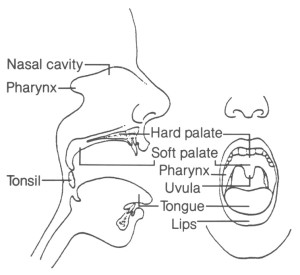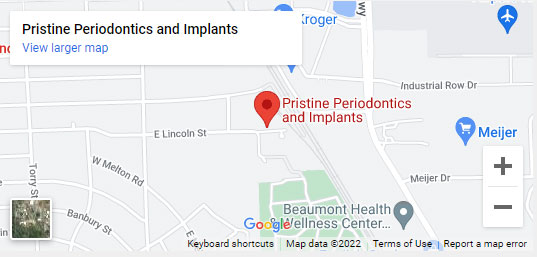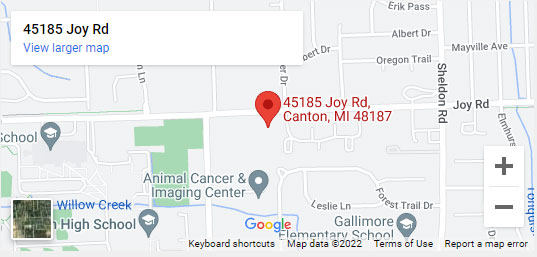
Oral cancer can easily be overlooked – and since most of us are uneducated about this particular form of cancer – we may not have a clear idea of the symptoms and warning signs to look for.
According to the American Cancer Society, it’s estimated that nearly 10,000 Americans will die from oral or oropharyngeal cancer in 2016. These types of cancer most often occur on the tongue, tonsils, oropharynx, gums, the floor of the mouth, and other areas of the mouth.
In celebration of Mouth Cancer Action Month, Dr. Abdullah Sayed and the talented team at Pristine Periodontics and Implants would like to stress the importance of oral cancer screenings and the warning signs patients should keep an eye out for.
What is Oral Cancer?

Cancer can start in any area of the oral cavity, which includes the lips, cheeks, gums, and floor of the mouth, as well as the oropharynx, (which includes areas such as the base of the tongue), the soft palate, the tonsils and the walls of the throat.
The areas affected by oral and oropharyngeal cancer are important for basic bodily functions like breathing, speaking, chewing, and swallowing. The unusual growth of cells create tumors that can be divided into three categories — benign/non-cancerous growths, pre-cancerous growths, and cancerous tumors.
Benign Growths: These types of non-cancerous growths can occur in different types of cells and won’t typically cause any life-threatening problems. In most cases, surgery to remove these tumors is the best option, because tumors are unlikely to come back.
Pre-Cancerous Growths: Abnormal tissue that can possibly be precancerous will typically be diagnosed as leukoplakia or erythroplakia.
Leukoplakia is a white or gray patch and erythroplakia is a red area that often bleeds easily if it’s scraped. A biopsy will be needed to see if these areas of erythroplakia or leukoplakia contain cancerous cells.
Cancerous Growths: The most common types of oral cavity cancer occur in squamous cells. These cells make up the lining of the mouth/throat and appear flat and scale-like. Other common types of cancer in this area occur in the minor salivary gland and lymphoid tissue.
Symptoms & Warning Signs of Oral Cancer
Depending on the precise area where the tumor occurs, the symptoms patients notice will vary. The good news is that treatment for oral and oropharyngeal cancer is very successful when it is detected early. With that being said, you can understand why it’s so important to catch oral cancer during the early stages.
Unfortunately, many patients can easily overlook warning signs. Often these same people don’t visit the dentist frequently enough to have the symptoms detected by a dental professional.
Some of the most common symptoms of oral cancer include:
- Sores or thick patches in the mouth or throat
- Red or white lesions in the mouth or lips
- Numbness or tenderness in the mouth
- Lingering sore throat or persistent feeling of a lump in the throat
- Loose teeth without any cause (severe tooth decay/gum disease or dental trauma)
- Trouble with chewing, swallowing or speaking
The actual cause of oral or oropharyngeal cancer will be different for each patient and be a combination of both lifestyle choices and genetic factors. Some of the controllable risk factors include:
- Tobacco usage
- Alcohol consumption
- Eating habits
- Sun exposure
- Sexually transmitted human papillomavirus
Detecting Oral Cancer and Treatment Options
Need another reason to go to your regular dental check-ups? Your dentist will often be the first to spot some of the warning signs of oral cancer! While at your routine cleanings, your dentist can spot common red flags such as unusual patches or sores. The American Dental Association recommends having an oral cancer screening every six months in conjunction with your routine dental check-up.
During an oral cancer screening, your dentist will take a look at your teeth and gums along with your lips and cheeks. Screenings will also include an examination of areas of the jaw and the underside of the tongue.
If you suspect you have oral cancer, you should have a biopsy of the area. With this inspection, you’ll find out if the growth is cancerous and what the best treatment option is for you. Most patients will treat oral cancer through surgery, radiation, chemotherapy or a combination of these treatment options.
Contact Pristine Periodontics
We believe the importance of preventative care and early detection cannot be overstated. Proper oral care, which includes daily brushing and flossing, should already be a priority.
Properly taking care of your oral health in combination with good lifestyle choices can significantly reduce your chances of developing oral cancer. Good lifestyle choices include avoiding tobacco, limiting your sun exposure, limiting your alcohol consumption, and following a healthy diet.
If you have concerns about your dental health, contact our office today! We offer a range of services that can best address your specific case. Contact our office at 248-838-1143 to schedule your consultation with Dr. Sayed.


